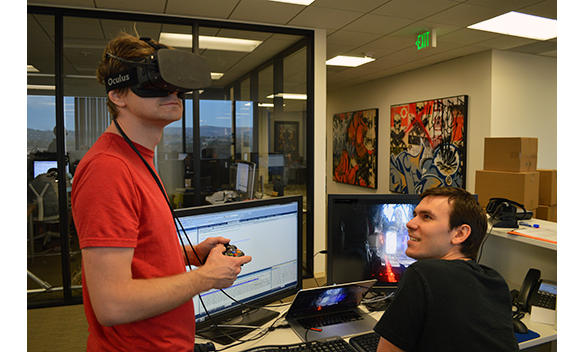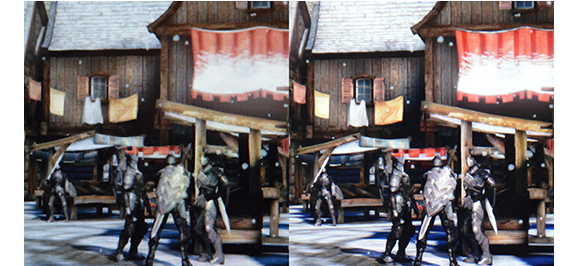
At first glance, the tiny conference room tucked away in a back corner of the L.A. Convention Center’s West Hall seemed like any other: cramped, with white walls and gray carpeting, under the unrelenting glow of fluorescent lighting.
Then I slipped the Oculus Rift virtual reality headset over my eyes, and the four walls disappeared. Turning my head in one direction revealed mountains buffered by fierce snow flurries. Slowly panning my head in the other direction brought rivers of lava into view—and a hulking, demonic monster sitting on a rock throne in a dark cave.
Dramatic? Sure, but it’s more than just poetic license. Oculus Rift utterly engulfs you in PC-generated virtual worlds, making you feel like you’re truly inhabiting digital domains—and the newly improved version I went eyes-on with at E3 2013 is already demonstrably better than the developer version we tried out at CES back in January.
[h=2]Ratcheting up the resolution[/h]While the developer kit of the Oculus Rift maxes out at 720p resolution, the headset that Oculus VR CEO Brendan Iribe handed me at E3 rocked a full 1080p HD resolution. The company had never demonstrated a 1080p headset before Tuesday.

Although the consumer prototype still packs the same gyrometer, accelerometer, and magnetometer found in the developer kit—it’s this trio that gives the Oculus Rift its 360-degree immersion, after all—it felt lighter in the hand than the developer version. Iribe confirmed that it was, though he wouldn’t get into weight specifics.
“The Oculus Rift just continues to get better,” was all he would say.

The 1080p consumer prototype didn’t, and its imagery just plain looked more crisp and vibrant all around. Colors were brighter. Details looked more, well, detailed. All in all, the consumer prototype is a huge improvement over the developer kit.
[h=2]Unreal Engine 4 integration[/h]Oculus VR had another nifty trick up its sleeve aside from the big resolution reveal. The team was demonstrating a fully playable version of Epic’s Elemental Demo, running at a silky-smooth 60 frames per second, to highlight the recent Oculus Rift software support baked into Unreal Engine 4—a vote of confidence that opens up a whole universe of gaming possibilities for the Rift.


 [/h]Brad Chacos spends the days jamming to Spotify, digging through desktop PCs and covering everything from BYOD tablets to DIY tesla coils.
[/h]Brad Chacos spends the days jamming to Spotify, digging through desktop PCs and covering everything from BYOD tablets to DIY tesla coils.More by Brad Chacos
[h=4]Subscribe to the Daily Downloads Newsletter[/h]
[h=2]Thank you for sharing this page.[/h]
[h=2]Sorry! There was an error emailing this page[/h]
